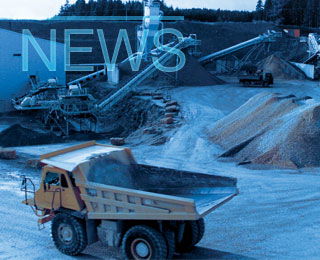Indonesian State-owned firm, PT Semen Gresik, the country’s largest integrated cement producer, is currently faces a daunting task to make its operations more efficient amid higher energy prices as well as a lack of consolidation among its subsidiaries. The East Java-based company has a total installed capacity of 17.2Mta million tons at present, with 5.5Mta and 3.5Mta derived respectively from its subsidiaries PT Semen Padang in West Sumatra and PT Semen Tonasa in South Sulawesi.
Semen Gresik’s newly appointed president director and chief executive officer (CEO), Dwi Soetjipto in an interview with the Jakarta Post noted that the most daunting task he was facing now is to consolidate the operation of Semen Gresik with its subsidiaries PT Semen Padang and PT Semen Tonasa. The problem occurred because the relationship between Semen Gresik, as the parent company, and its subsidiaries has not been solid ever since the government decided to unite the three state-owned companies.
Each of the companies is currently operating as a single and separate entity. Such a condition has actually created unnecessary costs, which eventually led to operational inefficiencies.
In the marketing sector, for example, most often the three companies compete with each other in the same area. This has created additional marketing and transportation costs. With regard to inventories, each company now tends to procure its own goods and supplies without coordinating with the others. This has also created inefficiencies.
“The rise in the oil prices concerns us because it will eventually drive up the price of coal, which is our main energy driver here. We only use diesel fuel for starting up our machinery, but for running the entire production process we use coal.
We are afraid that higher fuel prices may increase our transportation costs, which account for at least 10 per cent of our operating costs.
“For the new management, we are going to keep trying to accommodate the interests of the shareholders, be it the government, Cemex, or retail investors. The management will also try to create a working environment that is conducive to all.
“We are sticking to our target of making some Rp 600 billion (US$61.8 million) in net profit this year by boosting our sales and improving efficiency. Although there will be some pressures arising from costs, we will try not to raise our cement price again. We are still monitoring our competitors. But if the pressure from energy prices and transportation reaches a certain level, we will have no other choice but to raise our cement price once again.
“We are currently in the process of conducting a feasibility study [to build a new plant] which we expect to complete in November or December. The construction of the plant is scheduled for next year, with a completion time of three years. During the study, we will also investigate securing external resources to
fund the project, which it is estimated will cost about Rp 3 trillion. We expect that 70 per cent of the money will be derived from external sources, while the remaining 30 per cent will be from our cash reserves.
Regarding the location for the plant, we are still undecided. We are still seeking a suitable area that has sufficient resources and infrastructure. But the plant will definitely be located in Java. We may build our plant in West Java or Banten in order to take advantage of the huge demand in these two areas.
At present, our market share is 44 per cent. We expect to increase that, but with our current capacity it will be difficult. Our capacity is designed to
supply a 33 per cent market share.
